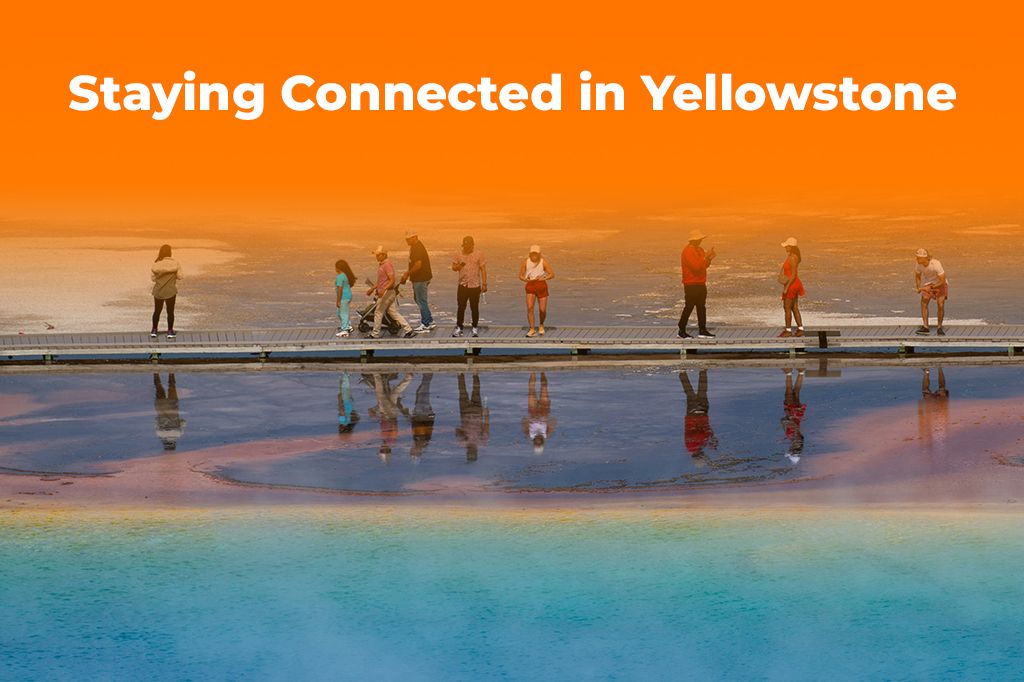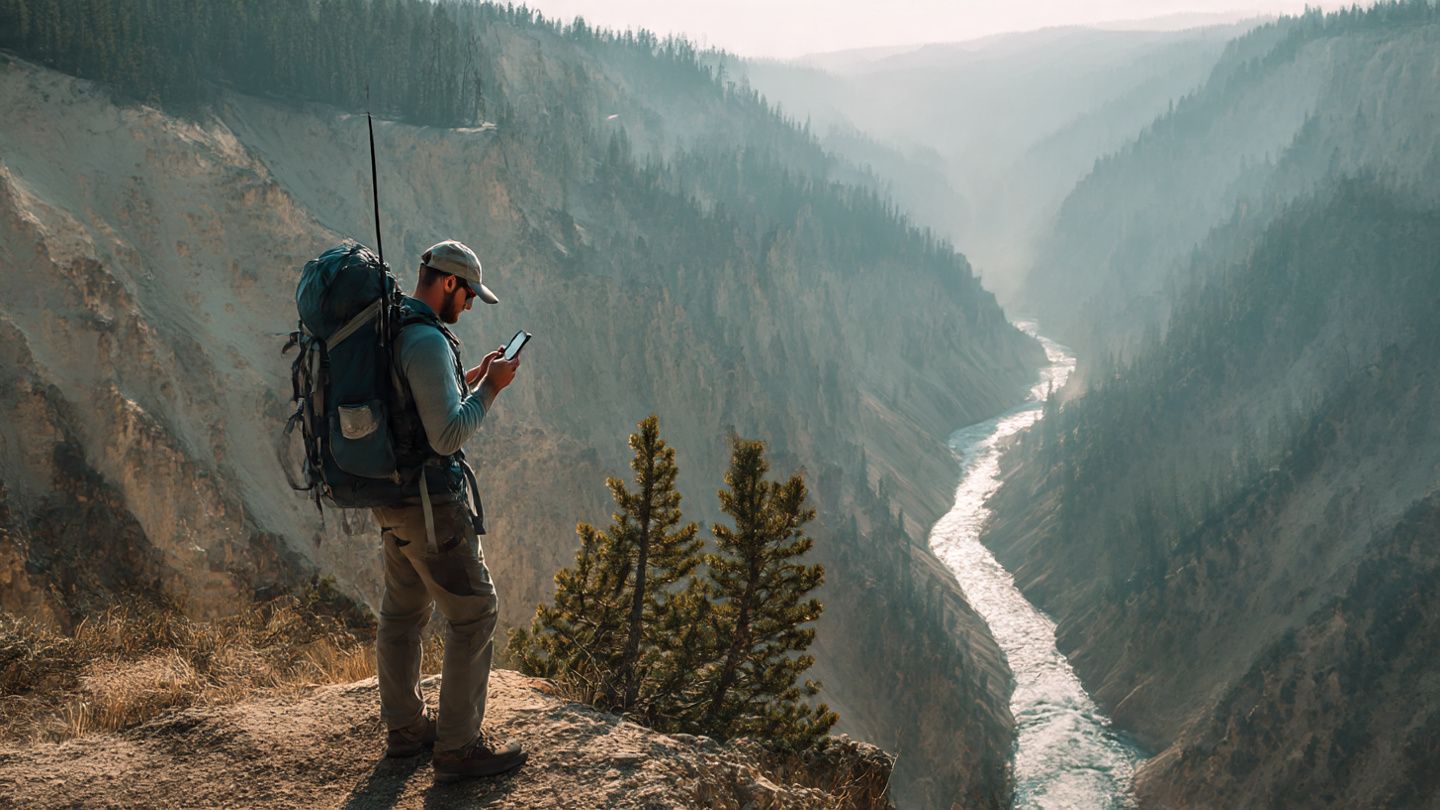Staying Connected in Yellowstone: Best eSIM Data Plans for Parks
Luis Rafael•Nov 18, 2025
Staying connected in Yellowstone is crucial for navigation, safety, and sharing the unforgettable landscapes you encounter, and the right eSIM data plan makes it surprisingly easy—even in such a remote national park. Because Yellowstone National Park data coverage is not uniform across every trail and valley, preparing ahead ensures you don’t lose track of your maps, travel plans, or travel companions. Before you head into geyser country, explore convenient USA travel eSIM options built for remote connectivity at Yoho Mobile.

Why You Need Reliable Data Inside Yellowstone National Park
Few destinations in the United States are more iconic than Yellowstone National Park, but its vast wilderness also makes staying online a challenge. Cell towers are sparse, visitor centers may be far apart, and thousands of visitors often depend on the same limited connections. That’s why choosing a reliable eSIM Yellowstone option matters before you arrive.
If you’re new to the technology, understanding what is an eSIM card helps you see why it’s ideal for national parks. Unlike physical SIM cards, eSIMs let you download a US data plan for tourists instantly, switch to stronger networks when available, and keep your primary number active. This flexibility is incredibly helpful in remote regions where coverage varies.
Travelers often expect spotty service in parks—but with the right Yellowstone National Park data plan, you can maintain essential services such as:
- GPS hiking routes
- Real-time weather alerts
- Emergency messaging
- Park conditions and closures
- Wildlife safety updates
- Live location sharing
External organizations like the National Park Service and technology experts at GSMA highlight the importance of having dependable connectivity when exploring remote or rugged areas. Yellowstone’s geothermal basins, deep forests, and high plateaus make it a place where having a USA travel eSIM can help you stay safe, informed, and ready for anything.
How an eSIM Improves Your Yellowstone Experience
Choosing a strong eSIM Yellowstone plan dramatically improves how you navigate and enjoy the park’s 2.2 million acres. Because you’re often hours from towns or even paved roads, travelers benefit from the adaptability of remote connectivity that an eSIM provides.
Here’s how an eSIM enhances your visit:
- Stronger multi-network access: Many eSIM Yellowstone providers let you access multiple US carriers, increasing your chance of finding a signal.
- Instant setup: No need to search for a SIM card in Montana or Wyoming—just activate before your trip.
- Better cost control: eSIM plans for tourists typically offer fixed-price data with no surprise roaming fees.
- Travel flexibility: Move between park regions or nearby states without replacing a SIM.
- Safety-first travel: Maintain access to emergency channels, even in low-coverage regions.
Since Yellowstone National Park data can vary by area—like Old Faithful, Mammoth Hot Springs, or the Lamar Valley—your phone’s ability to switch between networks improves your chances of staying connected. You can also explore deeper US travel eSIM insights by checking how Yoho operates at how Yoho Mobile works.
Where Yellowstone Has the Best (and Worst) Cell Coverage
Before selecting your Yellowstone eSIM data plan, it helps to know which parts of the park typically have service. While coverage changes year-to-year, here’s a general performance outline for major carriers:
- Better coverage areas: Old Faithful, Canyon Village, Mammoth Hot Springs, Grant Village
- Moderate coverage: Norris Geyser Basin, Hayden Valley, parts of West Thumb
- Weak coverage: Lamar Valley, Pelican Valley, certain backcountry trails
- Very poor or zero coverage: Deep forest areas, remote hiking routes, high-elevation ridges
This is where remote connectivity becomes essential. An optimized US data plan for tourists keeps you connected in areas with even minimal signal availability, giving you an advantage over single-carrier plans.
Step-by-Step Guide: How to Prepare Your eSIM for Yellowstone
To get the most out of your eSIM Yellowstone experience, follow these steps before entering the park. This ensures your Yellowstone National Park data is ready when you are.
- Check Your Phone for eSIM Compatibility
- Most iPhones (XS and newer), Google Pixels (3 and newer), Samsung S-series, and other modern Android devices support eSIM.
- Confirm your device is unlocked so it can accept a USA travel eSIM.
What to check
- Phone unlocked
- Latest system update installed
- Dual-SIM capability if you want to keep your home number active
- Choose a Yellowstone-Friendly eSIM Plan
- Look for a US data plan for tourists that includes multi-network access.
- Ensure your plan supports roaming in Wyoming, Montana, and Idaho—states surrounding Yellowstone.
- Review data allowance; Yellowstone maps and photos can use more data than expected.
Why this matters
Multi-network access is the single biggest advantage for rural parks.
- Install Your eSIM Before You Travel
- Purchase your eSIM Yellowstone plan and follow the installation instructions.
- On your device, go to Settings → Mobile Network → Add eSIM.
- Scan the QR code and activate it before leaving town.
Quick pro tip
Install and test your Yellowstone National Park data connection in a populated area before arrival.
-
Enable Data Roaming and Choose Your Data Line
- Set the eSIM as your primary data source.
- Enable data roaming so your phone can switch between carriers in rural areas.
- Keep your physical SIM active if you want your home number available.
-
Test Your Remote Connectivity Tools
- Check GPS apps like Google Maps or AllTrails.
- Download offline maps as backup.
- Test emergency messaging apps and weather alerts.
When you’ve confirmed your eSIM Yellowstone setup works properly, you’ll be prepared for the day’s adventures. If you want to secure your plan early for a smoother trip, consider browsing flexible options from Yoho Mobile to avoid last-minute stress.
Traveler Stories: How eSIMs Make Yellowstone Safer and Smoother
Thousands of Yellowstone visitors now choose eSIMs for remote connectivity because of how unpredictable rural coverage can be. Here are real examples inspired by common traveler experiences:
- A photographer in Lamar Valley relied on their US data plan for tourists to check weather shifts before capturing sunrise shots.
- A family traveling from overseas used their eSIM Yellowstone plan to share their live location after getting separated near Old Faithful.
- A hiker preparing to explore Hayden Valley downloaded bear safety guidelines thanks to a quick connection at Canyon Village.
- A digital nomad staying near Gardiner used Yellowstone National Park data to maintain calls and schedule client meetings.
These moments highlight how reliable data transforms a challenging environment into a manageable and memorable experience.
Quick Tips to Maximize Your Yellowstone Connectivity
Even with a strong USA travel eSIM, Yellowstone’s rugged terrain means you should travel prepared. Here are practical connection tips:
- Download offline maps for backup.
- Bring a power bank—you’ll use more battery searching for signal.
- Check coverage maps before choosing trails.
- Stay near visitor centers for the best service.
- Avoid uploading high-resolution content until you return to town.
Summary: What You Should Remember
- Yellowstone has limited coverage; planning ahead is essential.
- An eSIM Yellowstone plan provides stronger, more flexible connectivity.
- Remote connectivity helps with safety, navigation, and communication.
- A US data plan for tourists is cost-friendly and multi-network.
- Yellowstone National Park data varies dramatically by region.

FAQs About Using eSIMs in Yellowstone
Will an eSIM work everywhere in Yellowstone?
No. While an eSIM Yellowstone plan improves your chances, some deep backcountry areas have no coverage at all.
Which carrier works best in the park?
Coverage changes yearly, but Verizon and AT&T often perform best near major visitor hubs.
Do I need offline maps even with an eSIM?
Yes. Remote connectivity in Yellowstone can fluctuate and offline maps ensure safety.
How much data do I need?
At least 3–5 GB for a weekend trip, more if you frequently upload photos or videos.
Can international tourists use an eSIM?
Absolutely. A US data plan for tourists provides instant activation and reliable service.
Conclusion
With the right Yellowstone National Park data plan, you’ll stay safer, more informed, and better equipped for exploring America’s first national park. Before your adventure begins, check out dependable USA travel eSIM options at Yoho Mobile so you can explore geysers, wildlife, and trails with confidence.
